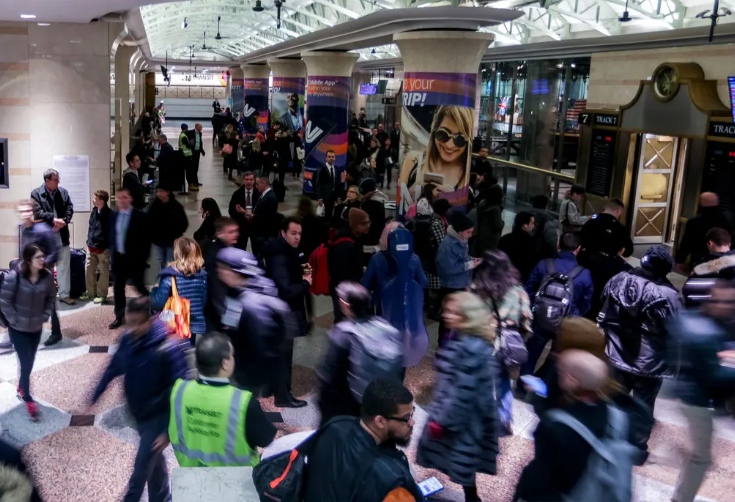
Credit...Jeenah Moon for The New York Times
Arriving today in New York’s Pennsylvania Station — as any commuter, tourist, or local may attest — is a degraded business. Previously, it was an awe-inspiring affair. Consider old Penn Station, a Beaux-Arts masterpiece of imposing grandeur and soaring arches that once straddled an entire block. A technological marvel, it welcomed weary travelers into midtown Manhattan until its merciless 1963 razing. But modern Penn Station — unlike its illustrious, state-of-the-art predecessor — is sorely unequipped to handle its 21st-century demands. In fact, a (brief) visit confirms that Penn Station 2.0 — a subterranean hellhole — lacks absolute coherence.
Notoriously difficult to navigate, Penn Station’s absurd layout only compounds its woes. Though the transit hub is purportedly composed of an upper and lower level, this — one soon discovers — is extremely misleading. In reality, the “two” levels are further divided by numerous split-levels, ramps, and stairs — all impeding efficient human flow. Consequently, Penn Station is perpetually crowded. Oh, and have I mentioned the baffling signs? “Downstairs,” I observe a man holding a map and scratching his head, clearly confused. People here look lost — because they are.
The scarcity of unity extends to the train concourses, which function as individual microcosms — each complete with eccentric fonts. Amtrak’s hall has high ceilings, but its waiting area is cramped as if passengers were the last priority. New Jersey Transit’s concourse, despite a garish color scheme, is the only tolerable space — in rush hour’s absence. And the Long Island Rail Road’s cross-station artery — clogged with a mishmash of stores and eateries — is suffering the architectural equivalent of a heart attack. If train services were amalgamated in old Penn Station’s fashion, this state of disarray would’ve been instantly eliminated.
Penn Station’s obstructive configuration isn’t just frustrating for riders — it actually endangers their lives. Particularly disconcerting is the dearth of escape routes, which constitutes a major security hazard. Antecedent incidents underscore the perilous ramifications; a literal 2017 stampede injured 16 people. Yet Penn Station doesn’t only want to kill you — it sucks the humanity out of you. After 15 minutes wandering its dim tunnels devoid of sunlight, I felt aggravated and stressed. Now, imagine doing this daily — for years. Exasperated commuters shove each other, scrambling for the subway home. Tourists dragging luggage gape at the chaos. Locals flee. Nobody wants to be here. Somewhere above the din, mournful strains of music wail.
For those interested in experiencing Penn Station’s horrors firsthand, admission is free. Entrances are located on 34th Street and 7th/8th Avenues — I utilize the 7th Avenue exit. Back outside, I glance at the squeaky escalators belching masses onto the unforgiving concrete curb. They emerge — and scamper away. As Vincent Scully, the late art critic, famously noted, “One entered the city like a god … One scuttles in now like a rat.” That blustery Friday afternoon, it wasn’t too hard to see Mr. Scully’s point.